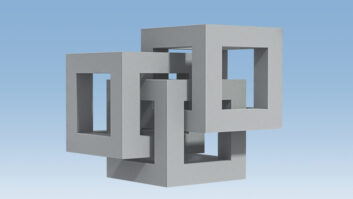In its latest report looking at the ongoing changes within the broadcast industry, the DPP has explored how cloud technology is now being used to deliver live production at every level.
According to Cloud Native Live Production, latency, bandwidth, and interoperability all remain challenging in some circumstances, but they are no longer seen as insurmountable in the move to cloud production.
The report finds that the true transformation comes from the shift to software-defined production, offering scalable, adaptable workflows with more flexible licensing, whether running in the cloud, a private data centre, or even in an OB truck.
Although custom hardware will have uses for some years to come, the industry is on an inevitable march towards software, states the report, adding that software’s real advantage is its scalability and adaptability to the range of live content that’s created today.
“An Instagram live stream can be shot on a smartphone with effects applied in the app, and delivered via Meta’s data centres,” says the report. “A high quality YouTube stream might be produced with prosumer software and controlled using hardware interfaces designed for gamers. And a professional TV production of a major live event might use dedicated racks of servers in-venue to do low latency mixing before adding complex graphics in the cloud.”
The report lays out four other key findings:
- Cloud live production still struggles to reach the top tier: Cloud production is now used for live news, entertainment, and sports. But some high end capabilities remain difficult, expensive and risky – too risky for much of the top tier.
- Listen to the needs of audio: Live audio mixing and production communications remain the least mature aspects of cloud production. Some issues are inherent; others could be fixed.
- We can’t change physics, but we can work around it: Latency remains the biggest challenge, and there will always be physical limits. But workflow changes can bridge the gap.
- Next gen media sharing is coming: Multi-vendor collaborations are already making cloud production more efficient. Whole new ways of sharing media will go on driving change.
The DPP adds that if it was to examine the industry landscape again in three years time, cloud will be the dominant model for production of event based content, popup streams, lower tier sports (such as college sports), and digital first content
Some media companies will have moved their core live production infrastructure to the cloud for genres such as news and entertainment—but they will be in a minority. But, where major migrations to cloud have taken place, it will have been at the point of technology refresh or greenfield build; media companies will not rush to replace existing infrastructure with cloud
“The conversation around cloud live production has notably shifted.” said Rowan de Pomerai, CEO of the DPP. “Until recently, media companies were asking whether they could produce high quality live content in the cloud. The discussion has now matured into a nuanced analysis of when cloud is—and isn’t—the best option. This new report lays out the practicalities of cloud production, and looks towards its future.”
The full report is available to download by DPP members here.







